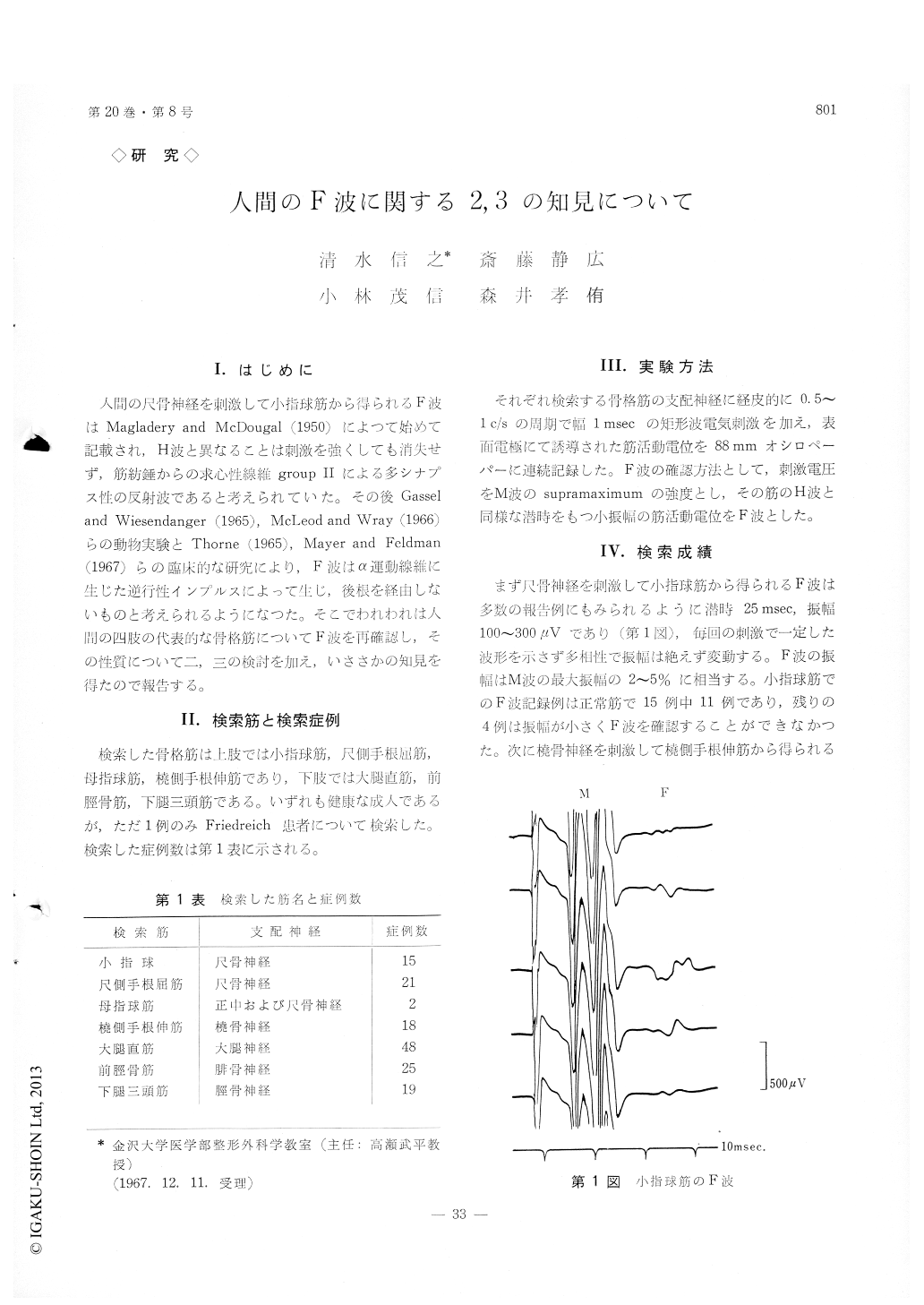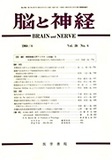Japanese
English
- 有料閲覧
- Abstract 文献概要
- 1ページ目 Look Inside
I.はじめに
人間の尺骨神経を刺激して小指球筋から得られるF波はMagladery and McDougal (1950)によつて始めて記載され,H波と異なることは刺激を強くしても消夫せず,筋紡錘からの求心性線維group IIによる多シナプス性の反射波であると考えられていた。その後Gassel and Wiesendanger (1965) McLeod and Wray (1966)らの動物実験とThorne (1965), Mayer and Feldman(1967)らの臨床的な研究により,F波はα運動線維に生じた逆行性インプルスによって生じ,後根を経由しないものと考えられるようになつた。そこでわれわれは人間の四肢の代表的な骨格筋についてF波を再確認し,その性質について二,三の検討を加え,いささかの知見を得たので報告する。
Recently it has been demonstrated that the F-wave may be dependent upon antidromic conduction in motor nerve fibres.
In this paper, some characteristics of the F-wave in normal subjects are described and compared with those of Friedreich patient in whom H-reflexes are lost as well as deep tendon reflexes in spite of volun-tary contraction or post-tetanic potentiation.
The antidromic volley was applied to mixed pe-ripheral nerves percutaneously and the muscle action potential to this nerve stimulus was recorded with surface electrode.
F-wave was produced and persisted with supra-maximal electric shock for motor fibres. In normal subjects it was readily recorded not only from small hand or foot muscles, but also from other muscles, for example, forearm extensor, triceps surae, tibialis anterior and so on.
The latency of its wave, which is approximately the same latency as that of H-reflex, changed slight-ly from stimulus to stimulus. The amplitude was few hundreds microvolts, that is to say, two to five percents of the maximal amplitude for the M-wave. The wave-form was polyphasic in its type and vari-able in each stimulus. In Friedreich patient, however, the wave-form was simple and slightly larger than that of normal subjects.
During voluntary contraction of the muscle the F-wave slightly facilitated, but the effects of tetanic stimulation (10 sec. 300 c/sec.) on it were very small and unstable.
The recovery curve of the F-wave was investi-gated also using Magladery's method. The F-wave was inhibited by a conditioning shock which pre-cedes the test shock by 20 msec. but was not in-hibited by shocks preceding the test shock by 50 msec. or more.

Copyright © 1968, Igaku-Shoin Ltd. All rights reserved.


